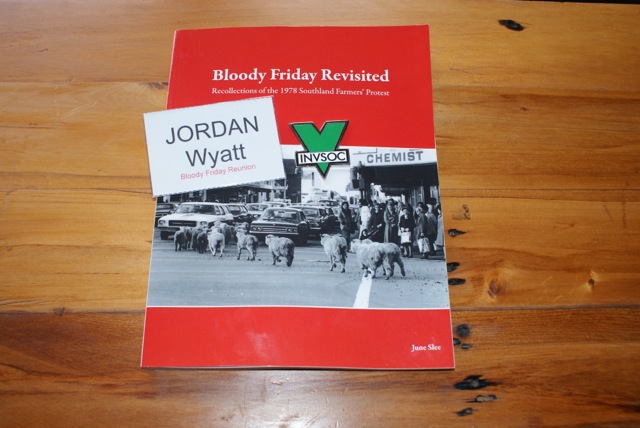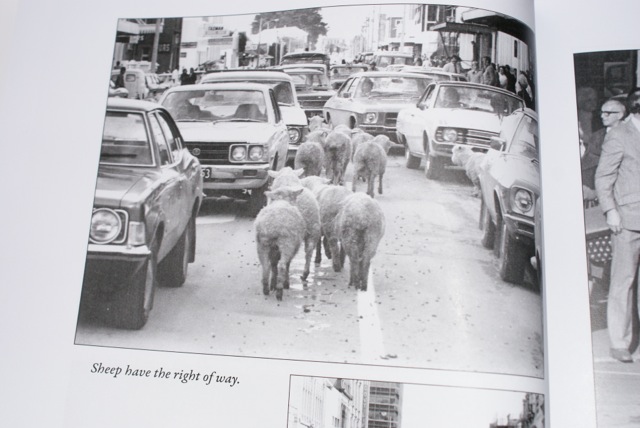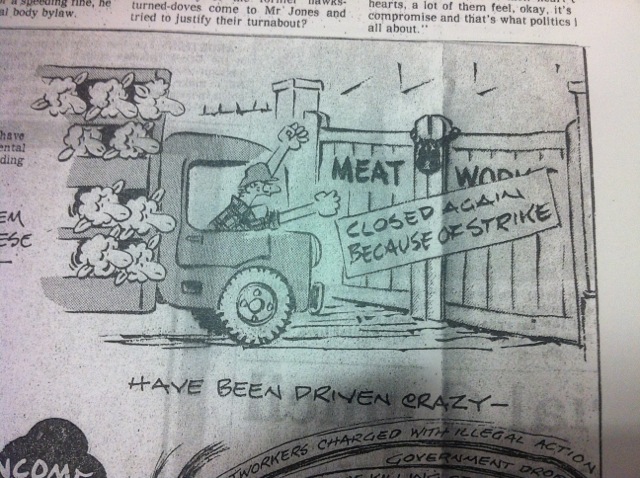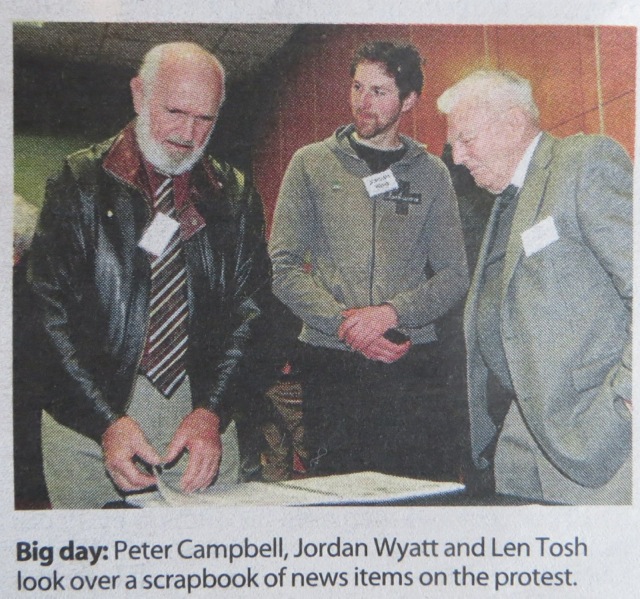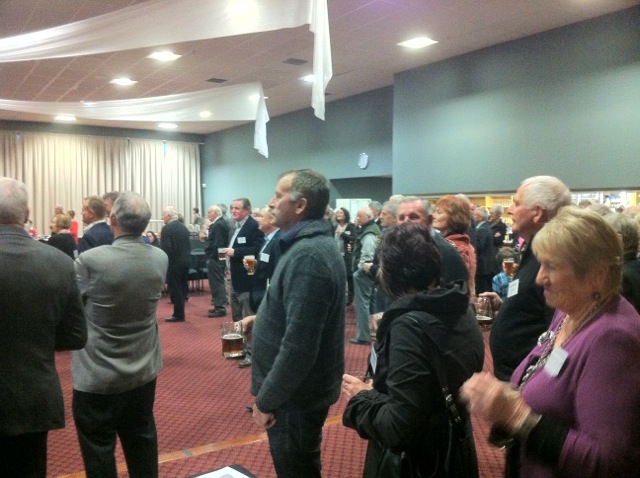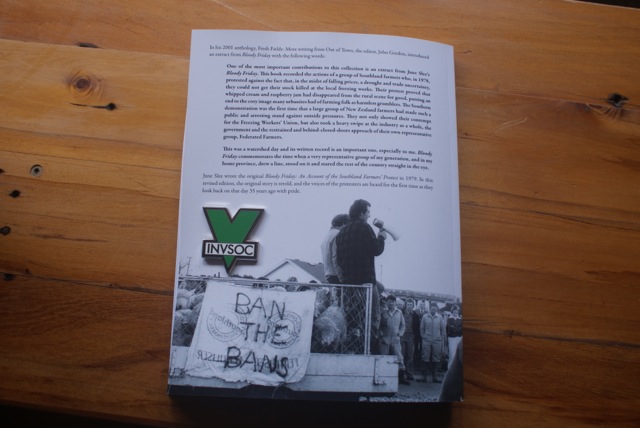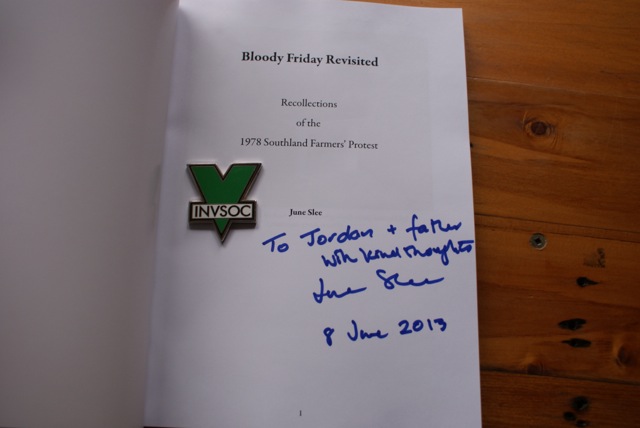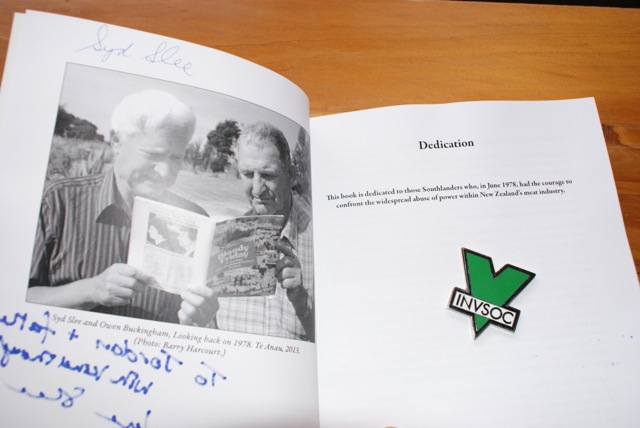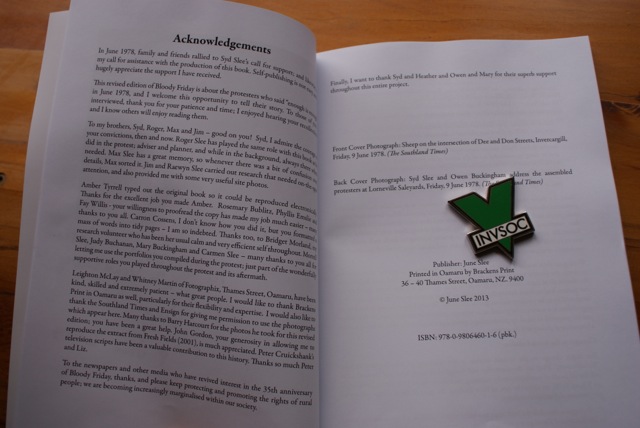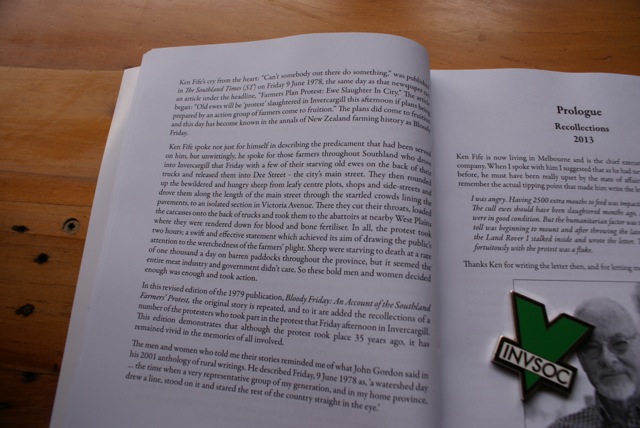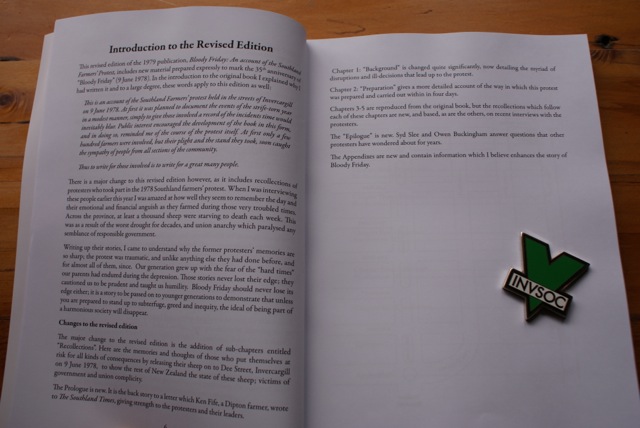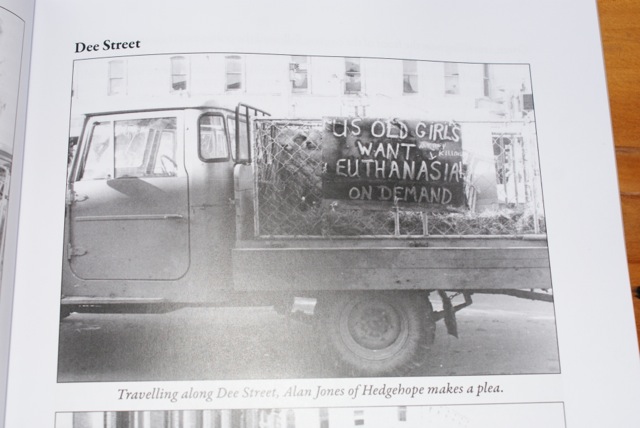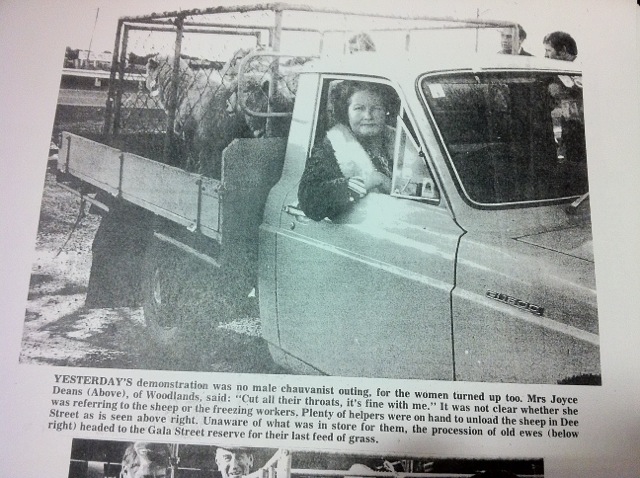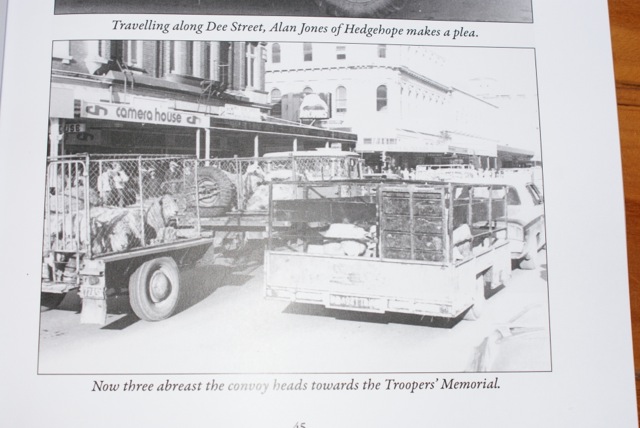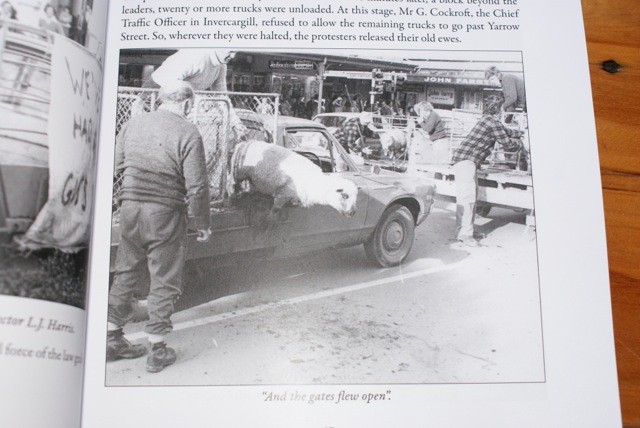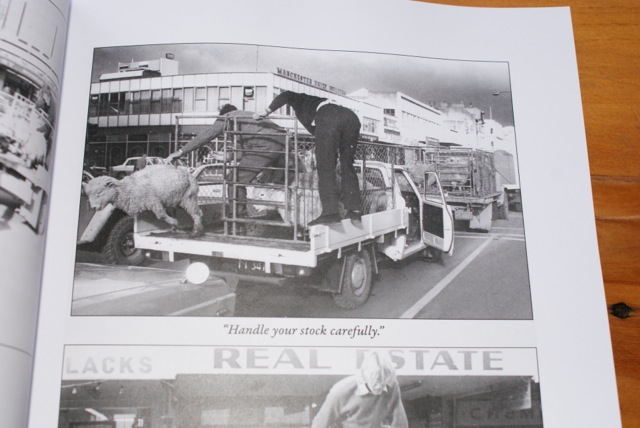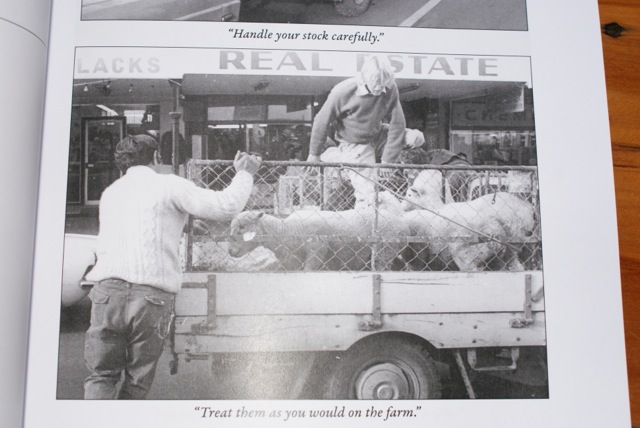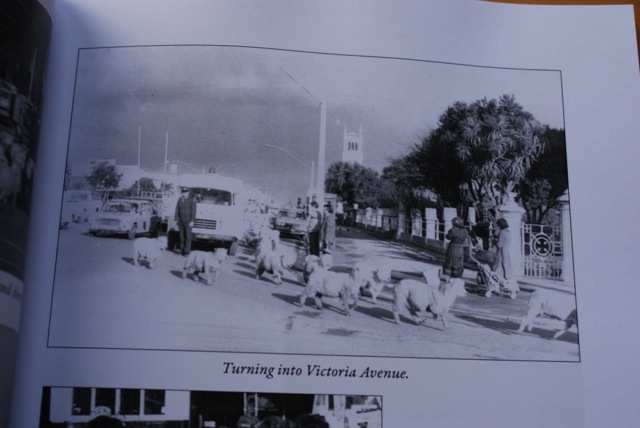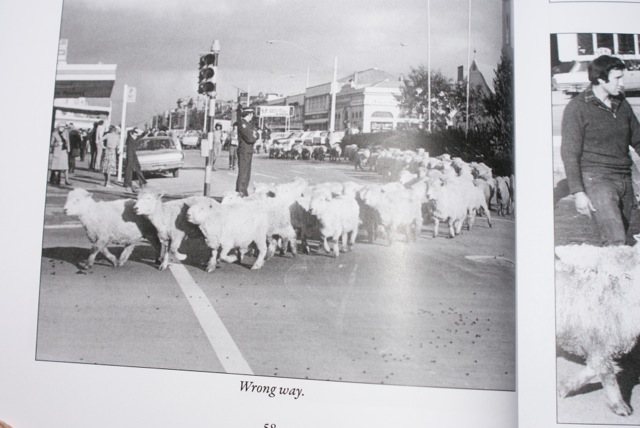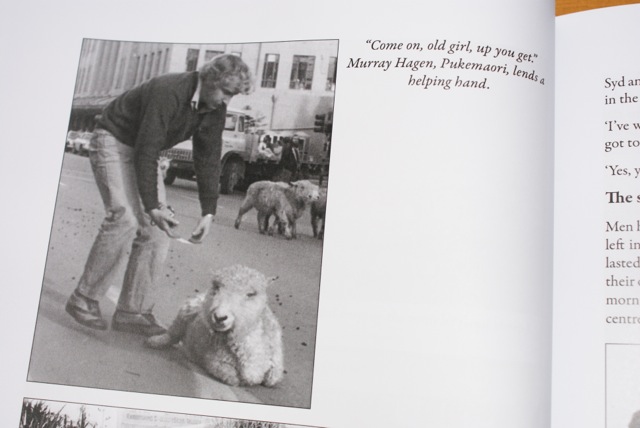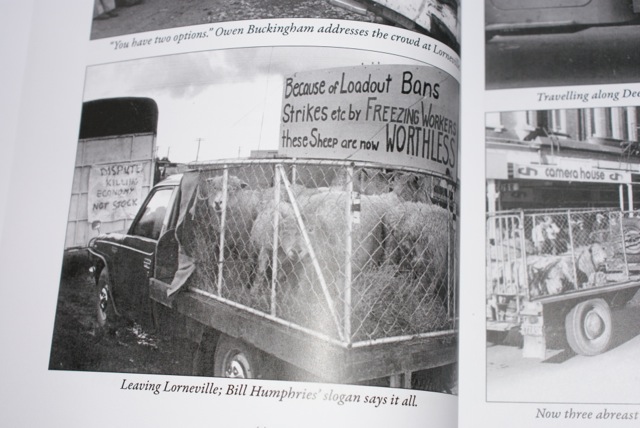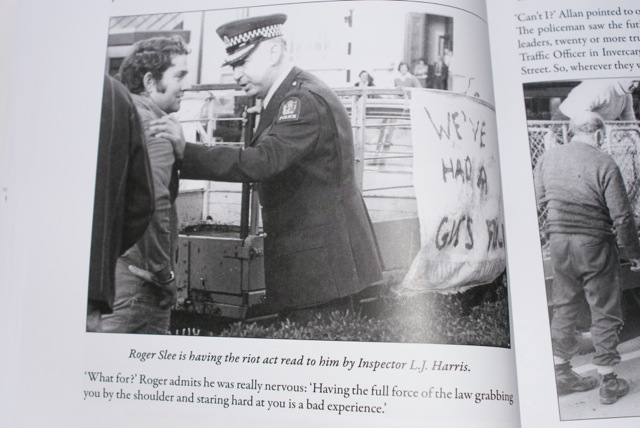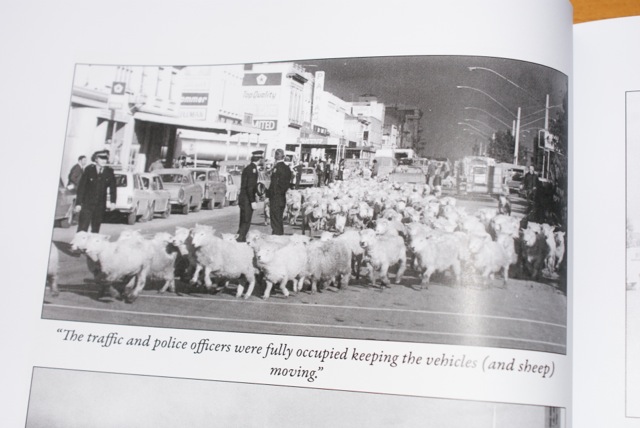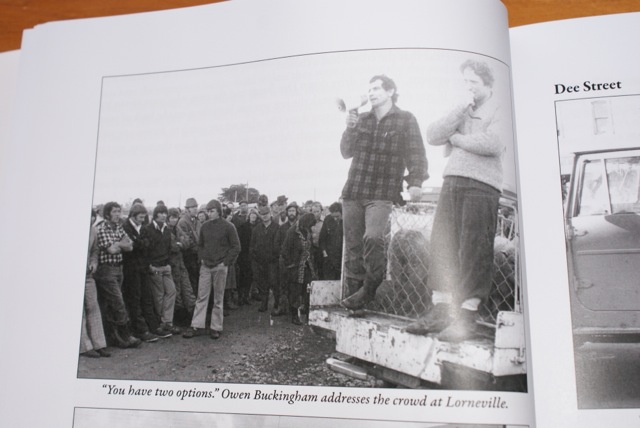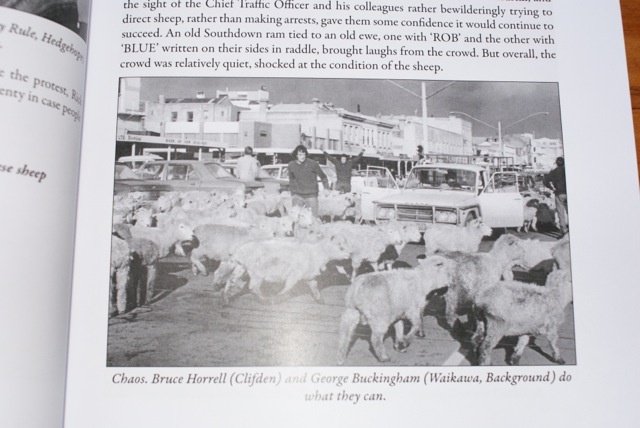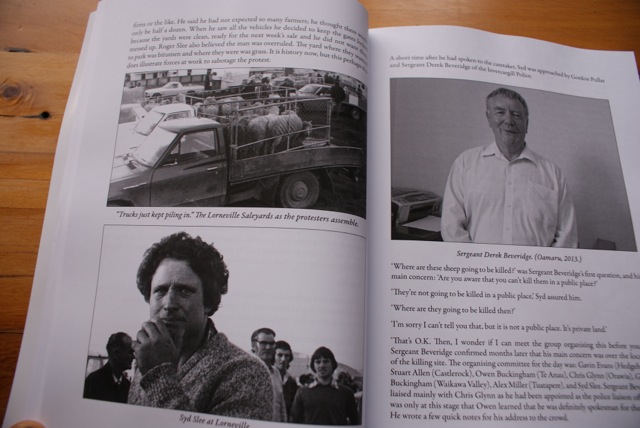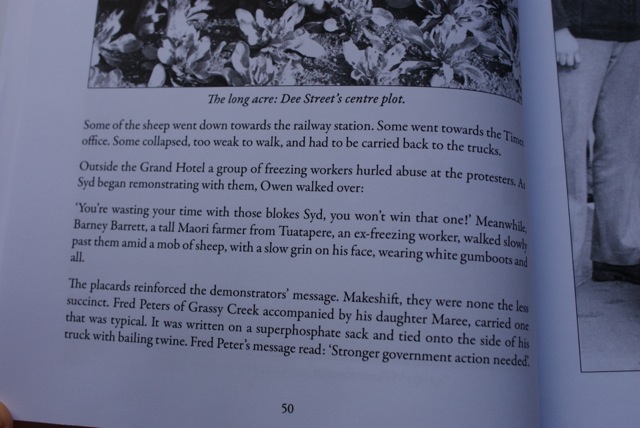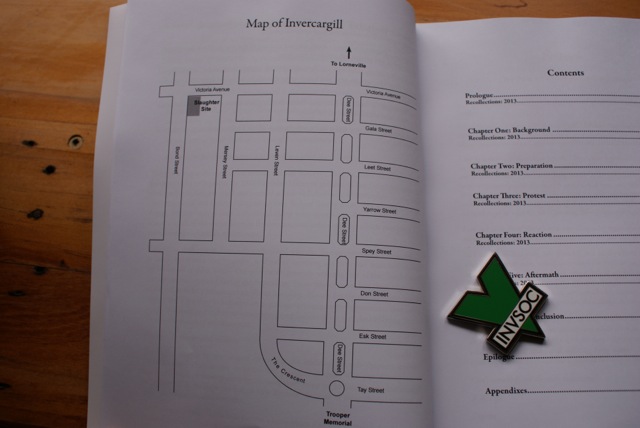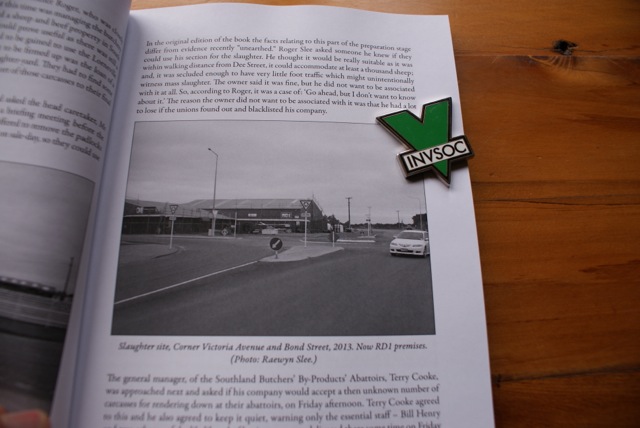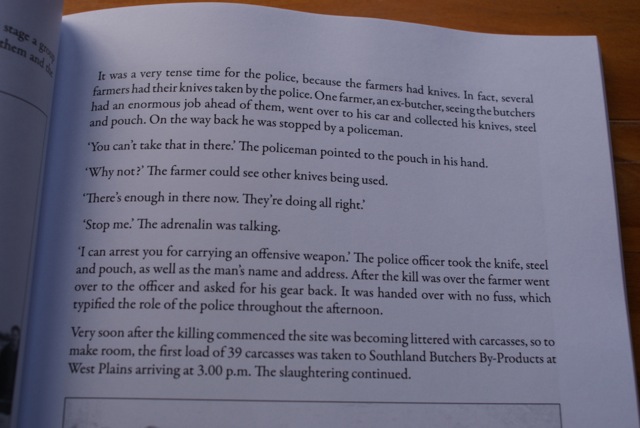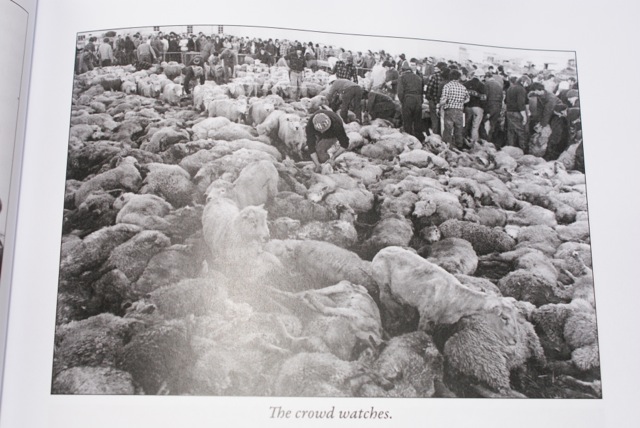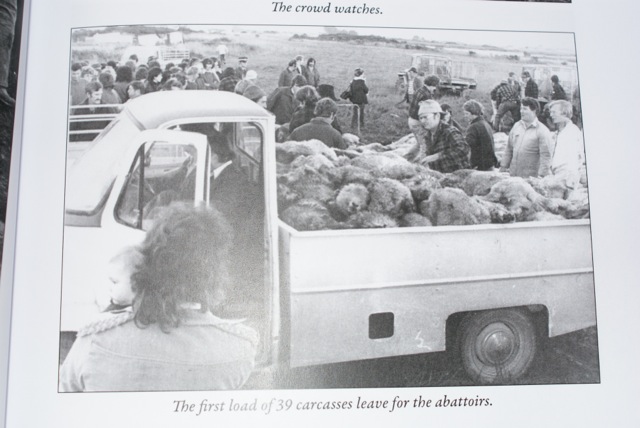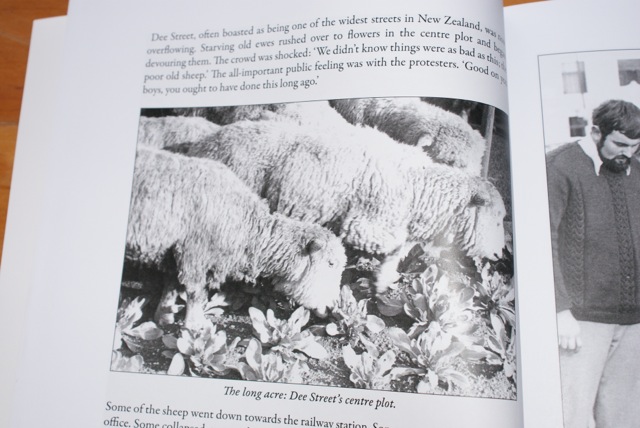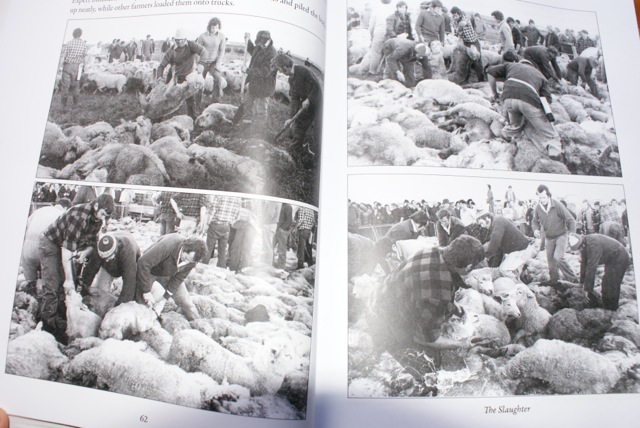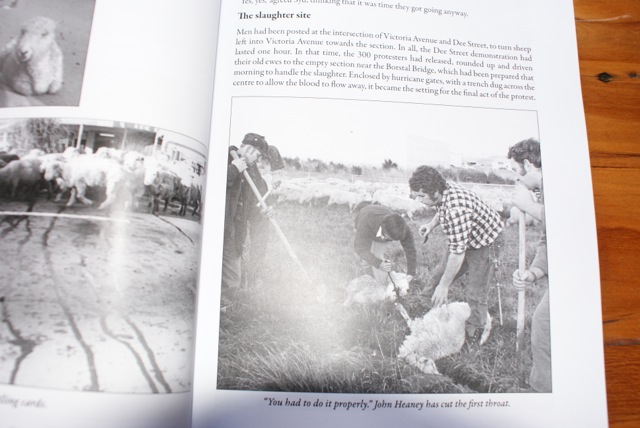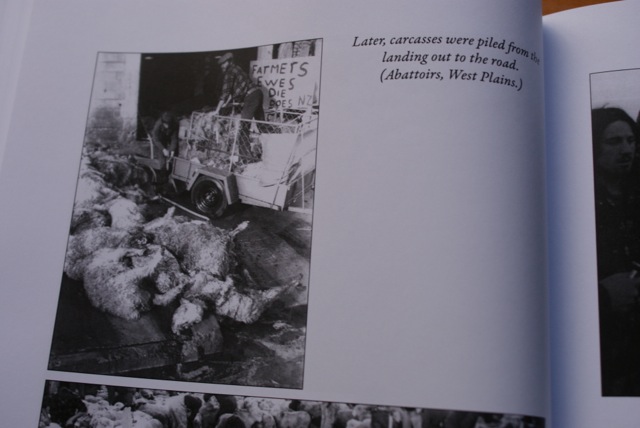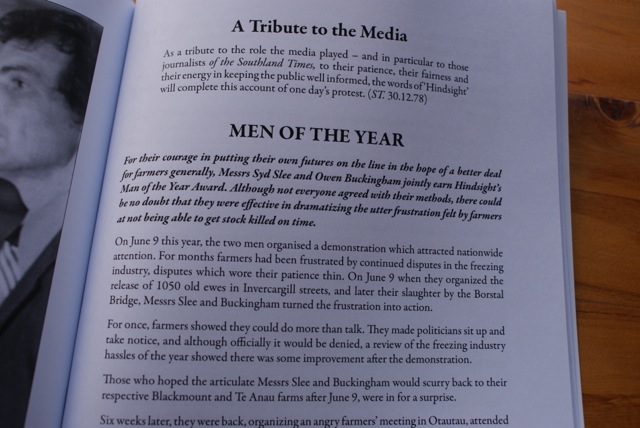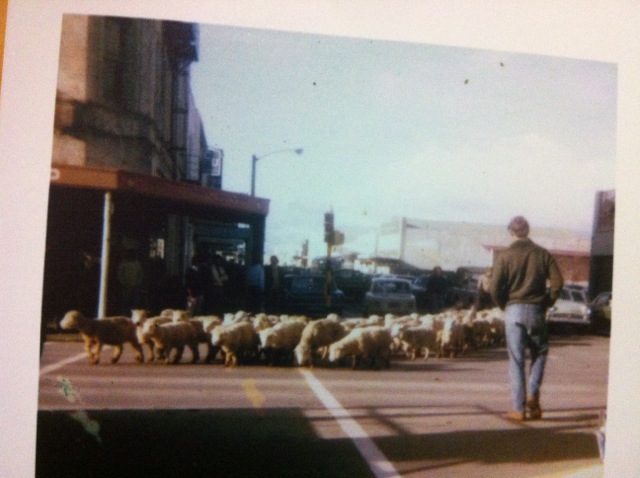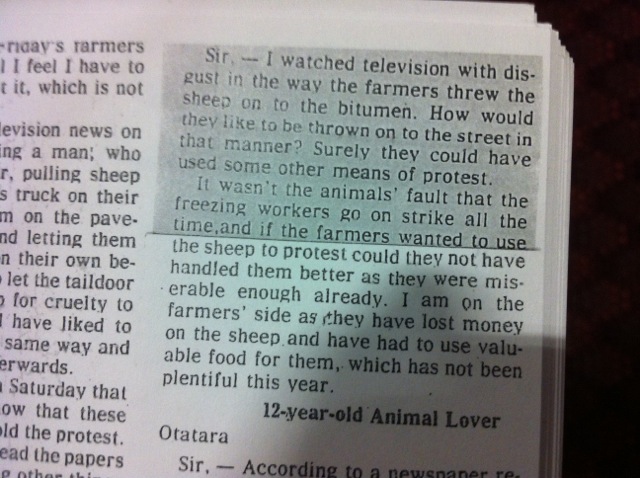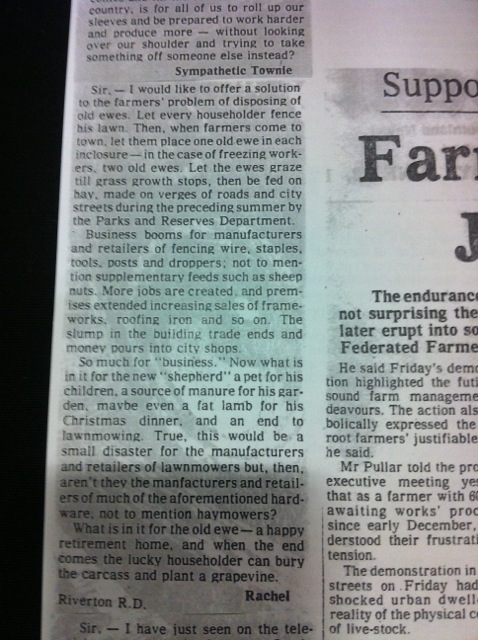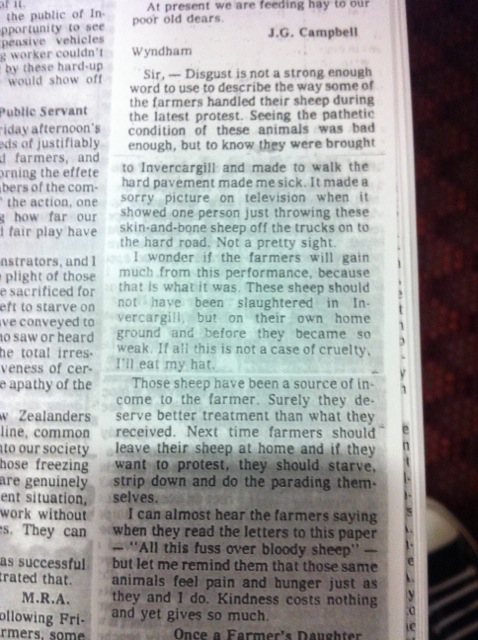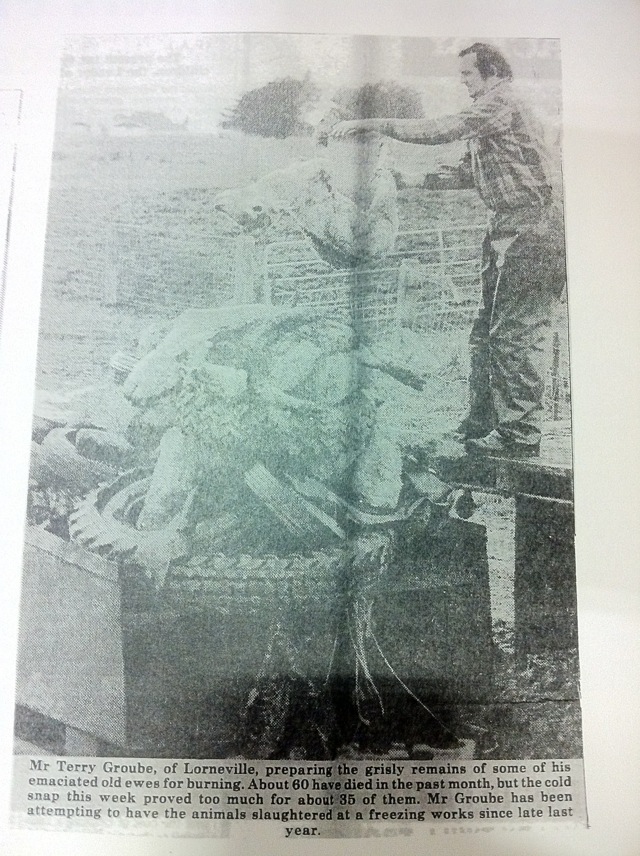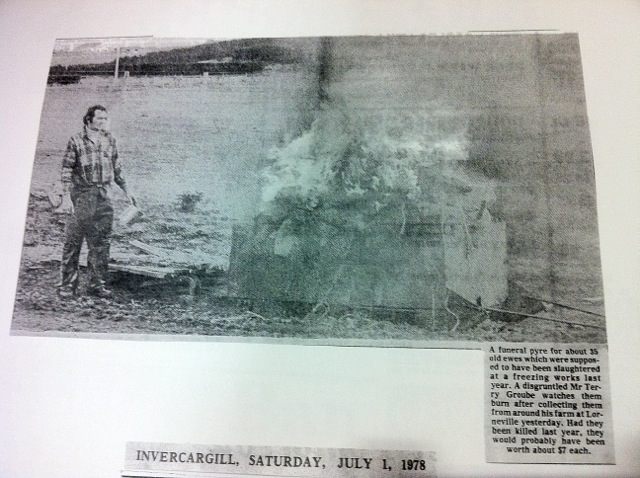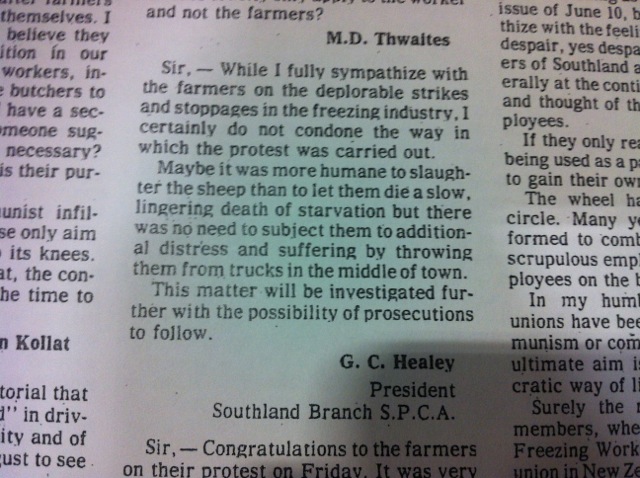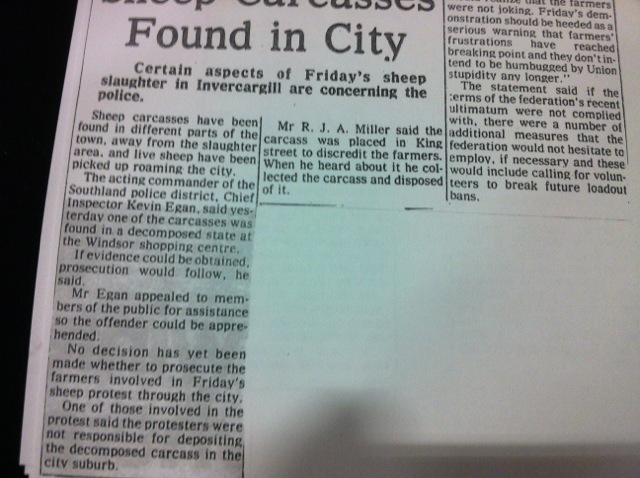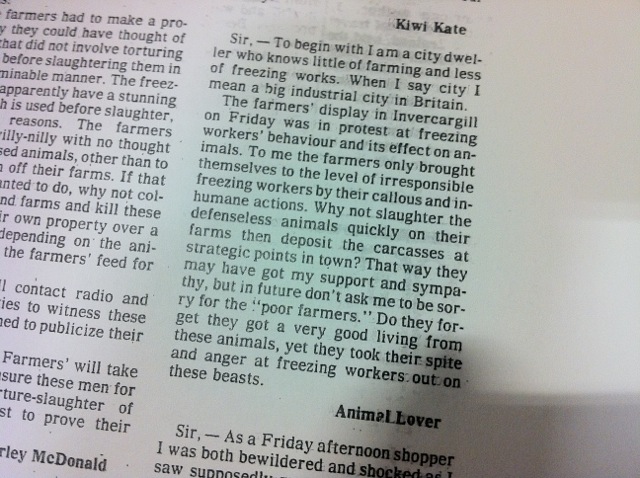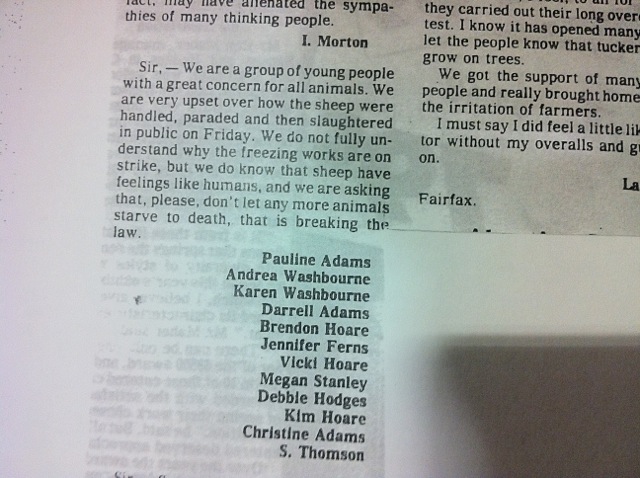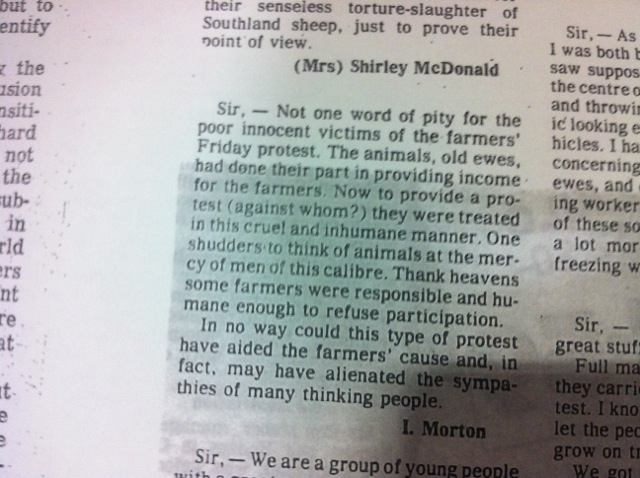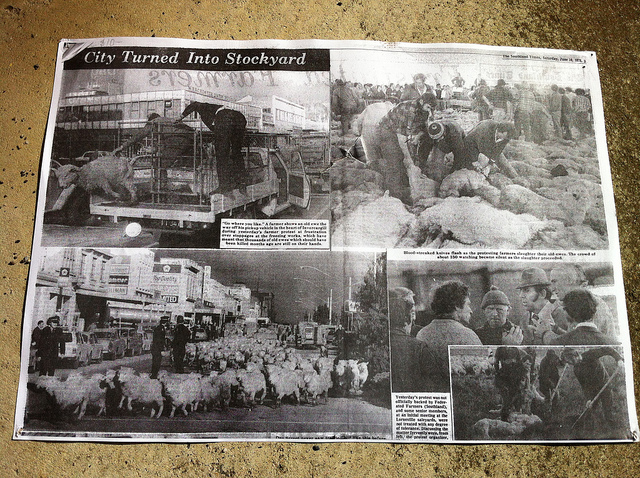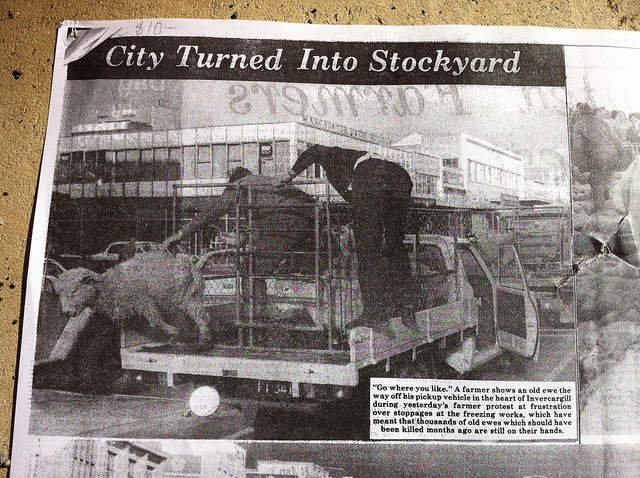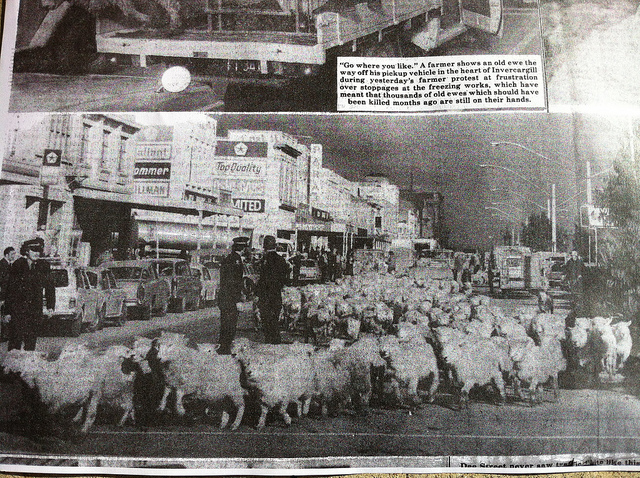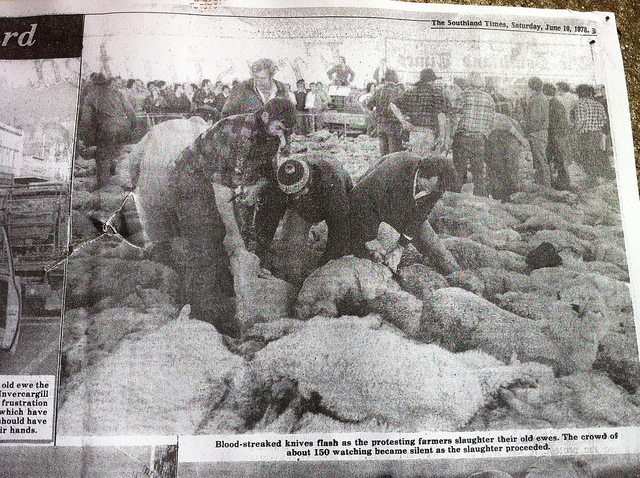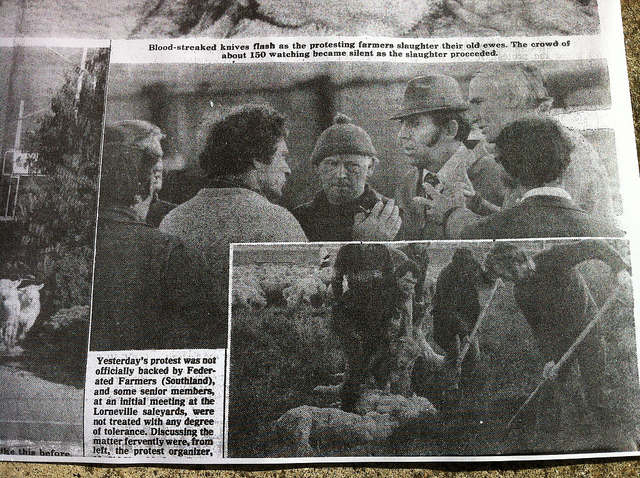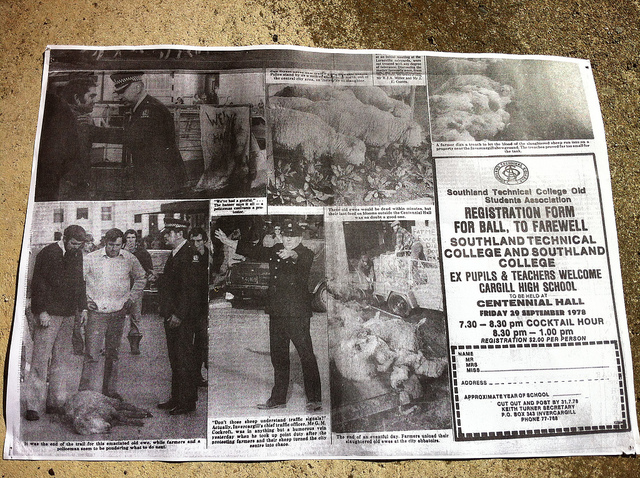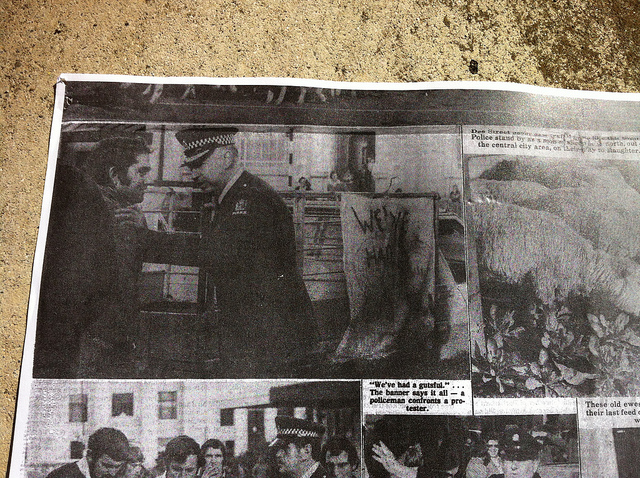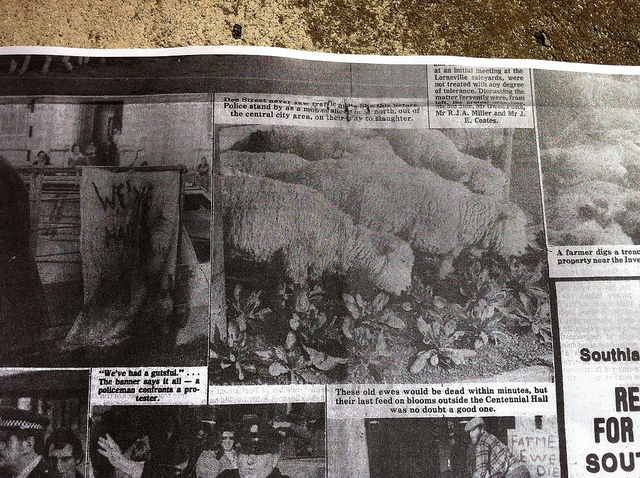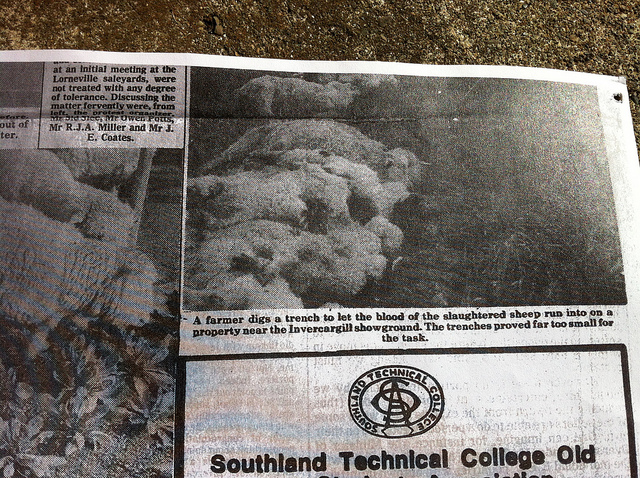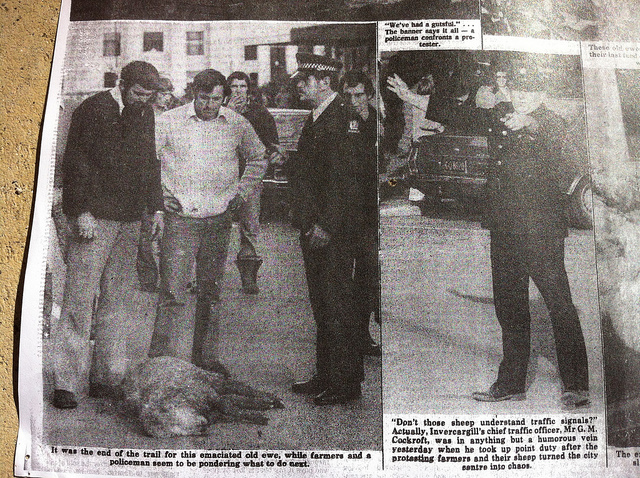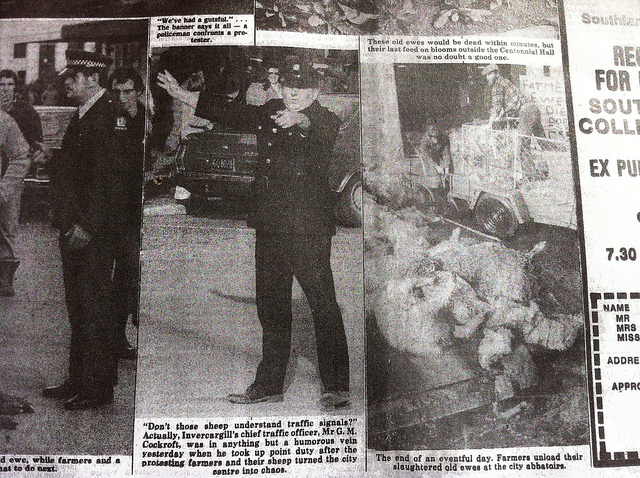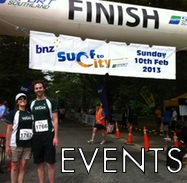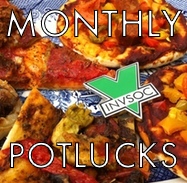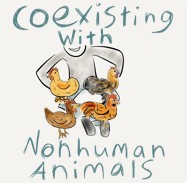We recently attended a reunion of retired farmers and slaughterhouse workers. They were reminiscing about a “protest” the farmers organised back in 1978, setting dying sheep free on the streets of Invercargill, and then killing them in great piles.
Essentially, the farmers were angry that the slaughterhouses could not kill “their” sheep fast enough. There were constant slaughterhouse strikes and “industry disputes”, delaying the slaughterhouses from killing sheep. The sheep grew “too old”, living longer than farmers let them live. They became “worthless” as they starved, due to lack of food.
In protest, the farmers caused havoc on the streets of Invercargill.
May 7th 2013 The Southland Times newspaper, “Farmers Sheep Slaughter Protest Revisited”
“Bloody Friday, the day anguished and angry Southland farmers ran 1300 starving ewes through downtown Invercargill and slaughtered them in protest, is to be recalled through a revised book and reunion next month.
The sometimes chaotic, sometimes sombre, sometimes grisly protest by about 300 farmers will be marked at a 35th anniversary reunion at the Invercargill Workingmen’s Club on June 8.
It will be open to anybody who has an interest in the dramatic event.
At the time, that was just about everybody.
The protest erupted from farmers’ frustration as their old sheep starved to death at a rate of 1000 a day because of industrial chaos across the meat industry, worsened by the worst drought for much of the province since 1956.
They drove their slow-dying sheep through the inner city.
At the height of the confusion three flocks were “running in all directions” on Dee St, The Southland Times reported.
Some of the townie reactions were lighthearted, initially, until the state of the animals became more apparent.
By the time the mobs were led to an out-of-the-way section in Victoria Ave and the farmers began slaughtering them, the scene had become “strangely quiet” the paper said.
Footage shocked the nation and repercussions resonated into the following year and longer; particularly those directed at the two leaders of the demonstration – Syd Slee, of Blackmount, and Owen Buckingham, of Te Anau.
June Slee has substantially updated her 1979 book about the protest, which will be re-released as Bloody Friday Revisited: Recollections of the 1978 Southland Farmers’ Protest.
“A common observation of the men and women interviewed was that today’s generation of young farmers would not believe what the immediate past generation of farming families went through and the toll it had on them, economically and emotionally,” she said.
During the first half of 1978 there were only nine days on which all four of the Southland freezing works were operating.
In total, there had been 116 recorded stoppages in the first five months of 1978, resulting in Southland’s kill being about 700,000 behind that of the previous season, with 1 million head of stock still waiting to be killed and the season due to finish,
The loss of wages to the freezing workers through these stoppages was estimated at $2.5 million to $3m and the loss to the community and the export trade was inestimable.
Among the significant costs was the time and cartage taking stock back to the farms because there was no killing on a particular day.
The book will be launched at the reunion by John Gordon, and further reminiscences of the day will be recorded for posterity.
The reunion will be an opportunity for all people interested in this unique protest to get together and share their memories.
“If the memories have dimmed somewhat, the photos and dvd footage of the day should spark them up,” Mrs Slee said.
Proceeds from the book and the reunion will go to the Southland Hospice.
Anyone interested in learning more about the protest, the book or going to the reunion, should contact Syd Slee for a reunion registration form.”
Invercargill Vegan Society members are interested in our regions history, Vegan and Non Vegan. We sent Jordan along by himself to the slaughter protest reunion, his photo was published in the “Farmer” newspaper! Herbivore clothing sweatshirt (“Cow Hugger”) and with an INVSOC badge next to his namebadge in a room full of retired farmers and slaughterhouse workers :-)
The Southland Times Newspaper after the reunion “Bloody Friday Farmers Praised For Bravery”
“Hundreds of Southland farmers involved in the 1978 “Bloody Friday” protest were praised for their bravery at the weekend.
About 200 people gathered at the Invercargill Workingmen’s Club for the 35th anniversary of the protest, when farmers ran 1300 ewes down Dee St before slaughtering them on a Victoria Ave section.”
Here are some photos from the book “Bloody Friday Revisited” by June Slee, and pictures taken at the sheep slaughter protest reunion.
The author signed our copy of the book! “To Jordan + Father, with kind thoughts, June Slee 8 June 2013”. (Jordan’s father was a slaughterhouse worker, which he told the organisers)
One of the main protest leaders, Syd Slee also signed our copy.
“Dedication This book is dedicated to those Southlanders who in 1978 had the courage to confront the widespread abuse of power within New Zealand’s meat industry.” (industrial disputes slowing down slaughterhouse work, an “abuse of power”)
As Vegans, we are “confront[ing]” the “widespread abuse of power” within MULTIPLE New Zealand industries! I wonder if the Farmers book is dedicated to Vegans too? :-)
“Us old girls want euthanasia on demand”
“Yesterday’s demonstration was no male chauvinist outing, for the women turned up too. Mrs Joyce Deans ([below]) of Woodlands, said: “Cut all their throats, it’s fine with me.” It was not clear weather she was referring to the sheep or the [slaughterhouse] workers.” !
Sheep being led past McDonalds, towards the slaughter area.
Slaughter site map
RD1, a farmer supply store now stands where the sheep were slaughtered in 1978. (RD1, as in a Rural Delivery postal address number like on a New Zealand farm. “RD1”, a Farmers one stop shop, first place to look for supplies)
“The crowd watches”
“You had to do it properly.” John Heaney has cut the first throat”
The protest slaughter leaders were named “Men of the Year”.
Spey Street/Dee intersection.
Letters to The Southland Times newspaper after the slaughter, 1978
Previous photos of the slaughter protest coverage
Page 1
Page 2

